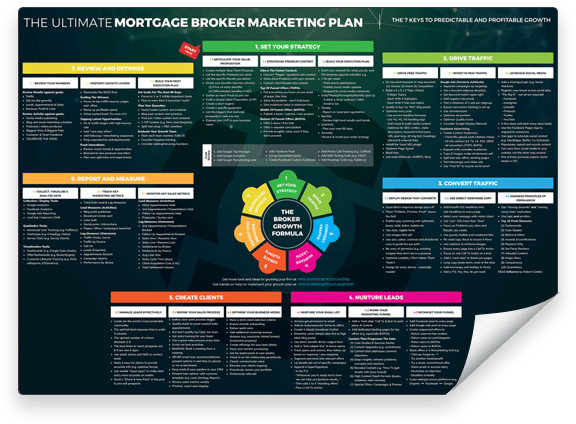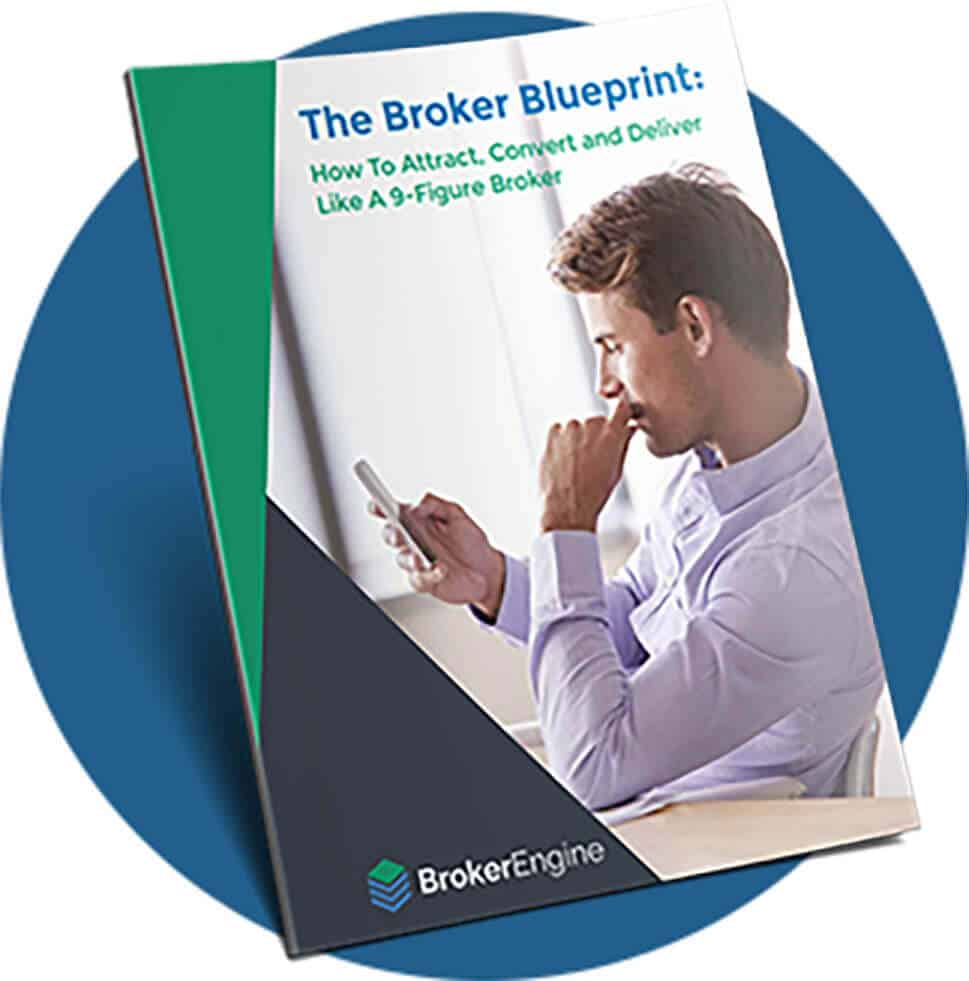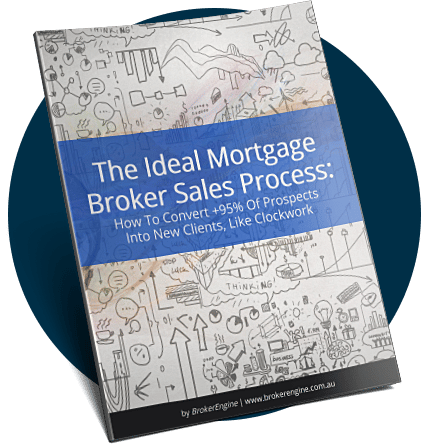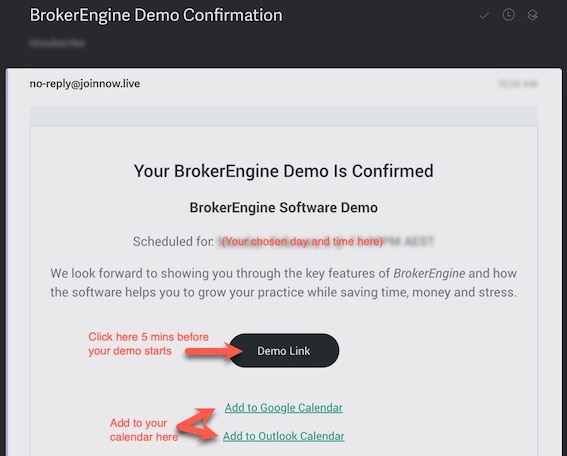In 2024 the Australian mortgage broking industry recorded its highest ever market share of 75%, up 18% since 2017.1
This growth has driven healthier competition among lenders and provided consumers with greater support in navigating their finances.
Here are the top 10 team, technology and market trends that are shaping the transformation of mortgage broking in 2025 and beyond. (Scroll down for a full analysis).

We hope you found this infographic useful. Now here’s a longer form version of the Mortgage Broking Industry Trends for 2025:
1. The Rate Cut Market is Back, But it Won’t Play Out Like Last Time
The last time the RBA cut rates in 2020, borrowing skyrocketed. Cheap money flooded the market, fuelling refinancing booms and price growth. But this time, it’s different.
Rates are coming down, but tighter serviceability means borrowing power is still constrained. Investors and first-home buyers are coming back, but they’re cautious. The real battle isn’t in attracting new business (though that’s certainly part of the puzzle!). It’s in retaining the clients you already have.
Roughly 80% of borrowers are on variable rates.2 That means retention matters more than ever. Every client is a target for a competitor’s refinancing offer. If you’re waiting for them to call, you might have already lost them.
The best brokers are often using automated repricing strategies and proactive client outreach to lock in existing clients before someone else does. The ones who don’t might find their book shrinking, even as the market heats up.
2. AI Is Reshaping Mortgage Broking
AI isn’t coming. It’s here. And it’s making smart brokers more efficient.
Brokers are using AI to summarise BID notes, analyse documents and qualify leads. They’re automating client communications and cutting down the hours spent on admin. Some of the best firms are often building their own AI-powered tools tailored to their workflow.
This isn’t a gimmick. AI is helping to reduce the cost per file, streamline compliance, and giving brokers back time to focus on higher-value work.
But AI isn’t a magic fix.
Privacy concerns are still a challenge. Bad inputs lead to bad outputs. Some AI-powered tools are overhyped and underdelivering. Clients still want to deal with real people.
Brokers who use AI to enhance their process without losing the personal touch will often thrive. The rest might struggle to keep up.
3. Brokers Are Competing Against Brokers, Not Banks
Mortgage brokers now write 74.6% of all new home loans.3 Banks aren’t the competition anymore. Other brokers are.
Many clients aren’t asking whether they should use a broker. They’re deciding which broker to use.
Referrals drive 28% of new business.4 Nearly half of clients return for their next loan. But that’s only if you stay top of mind and make the process easy.
Loyalty isn’t guaranteed. It’s earned. You need a compelling and differentiated value proposition. And you need to build stronger client relationships, streamline processes, and provide proactive service to help keep winning. The ones who assume past clients will automatically return might not.
4. Specialisation Is Replacing “Do-It-All” Brokers
One and two-person brokerages aren’t going away. They still make up the majority of brokerages. But for medium and larger firms, the shift towards structured teams with defined roles is accelerating.
Brokers in these firms are moving away from handling everything themselves: client interactions, loan processing, admin, compliance and marketing. Instead, they’re building specialised roles to improve efficiency and scalability.
- Loan processors and admin staff handle documentation and compliance, freeing brokers to focus on relationships
- Salaried brokers provide stability and support business growth
- Centralised marketing and client retention teams ensure brokers stay front of mind with their client base
It’s about removing bottlenecks in firms looking to scale. Brokers who try to grow without specialist support and structured processes may hit a ceiling as they search for “unicorns” who can do everything they need and expect. Those who embrace team structures and systematisation may scale faster and more profitably.
5. The Best Brokers Win Clients Before They Need a Loan
Marketing isn’t just about running ads when you need leads. The brokers winning today are building audiences long before a client is ready to buy.
The best brokers aren’t just advisors. They’re educators, influencers, and thought leaders. They’re posting on social media, creating content, and staying in front of future clients for months or years before they need a loan.
Clients don’t shop around when they already trust a broker. The brokers who establish authority before the buying cycle begins could dominate in 2025.
6. Customers Have Sky-High Expectations
A competitive rate isn’t enough. Clients care just as much about how they felt working with you.
Fast responses, clear communication, and proactive support keep clients engaged. Slow service, confusion, and silence could push them away.
Clients expect real-time updates, seamless digital processes, and e-signing. They assume you’ll keep them in the loop at every stage. The brokers who prioritise speed, transparency, and communication may keep their clients for life. The ones who don’t might spend every year replacing lost business.
7. Brokers Are Building Value Beyond The Loan Book
Growing a trail book is often a common goal for brokers. But a new wave of brokers are building firms with value beyond the loan book.
They’re investing in brand awareness, structured teams, and scalable processes. They’re creating repeatable systems that don’t rely on one person to function.
This isn’t just about selling a business. It’s about building a firm that runs smoothly whether the owner stays or not.
The brokers treating their practice like a business, not just a job, are setting themselves up for long-term success.
8. Diversification Has Become The Norm
More brokers are expanding into asset finance, commercial lending, SMSF loans and financial planning. Buyers’ advocacy services are becoming more common. Aggregators have made it easier than ever to refer and cross-sell services.
Clients don’t want to deal with five different financial professionals. They want a trusted advisor who can handle their full financial picture. The more services a firm provides, the stickier clients become and the harder it is for them to leave.
Brokers who broaden their offering are often building deeper client relationships and increasing the lifetime value of every customer.
9. Rise Of Trigger-Based Client Engagement
The best brokers aren’t waiting for clients to call. They’re spotting key triggers that signal borrowing needs before clients even realise they’re ready to act.
Expiring fixed rates, rising equity, and lender rate drops could create refinancing opportunities. Life-stage changes like a new job, growing family, or property upgrade may signal the need for a new loan.
Brokers who track these triggers and reach out first may attract more clients.
10. Brokers Can Build & Tweak Their Own Tech
Five years ago, brokers often had to rely on IT teams to make simple tech changes. Now, they’re managing smarter, more connected tech stacks themselves.
Application Programming Interfaces (APIs) and integrations are making platforms talk to each other seamlessly. No-code automation tools let brokers customise workflows instantly. AI-driven automation is helping to eliminate repetitive tasks.
Tech isn’t just about efficiency. It’s about building a brokerage that runs smoother, scales faster, and delivers a better experience for clients.
Brokers who embrace connected, automated systems could pull ahead. Those relying on outdated, manual processes may fall behind.
Conclusion and Next Steps
The mortgage broking industry trends covered above are not a mystery – they are already upon us and accelerating every day.
The question is, how well are you positioned to take advantage of them? And what decisions do you need to make today in order to ensure your firm is able to ride on the crest of the wave?
If you’re interested in finding out how BrokerEngine software could help you apply Specialisation, Division of Labour and Process Excellence to deliver a 5-star customer experience at scale and settle more deals in less time, please register for our latest demo here.
Disclaimer
The information provided in this article is a selection of information taken from publicly available sources and is current as at the date specified. We do not provide tax, legal or accounting advice. Any information provided is of a general nature and/or for illustrative purposes. It does not take into account a person’s objectives, financial situation or needs and is not intended to provide, and should not be relied on for, tax, legal or accounting advice. We suggest you consult your own tax, legal and accounting advisors before engaging in any transaction. We make no representations about any third party supplier referred to, or linked, in this article.
1 https://www.theadviser.com.au/broker/46676-the-value-of-brokers-revealed-in-new-report2 https://www.reuters.com/markets/rba-finds-no-evidence-monetary-policy-is-more-potent-australia-than-elsewhere-2024-11-18/?utm_source=chatgpt.com3 https://www.theadviser.com.au/broker/46441-broker-market-share-hits-new-record-high-3?highlight=WyJicm9rZXIiLCJtYXJrZXQiLCJzaGFyZSJd4 https://mfaa.com.au/wp-content/uploads/2025/03/81cc197b0794f1638caf20db5b1e20f986201849.pdf







